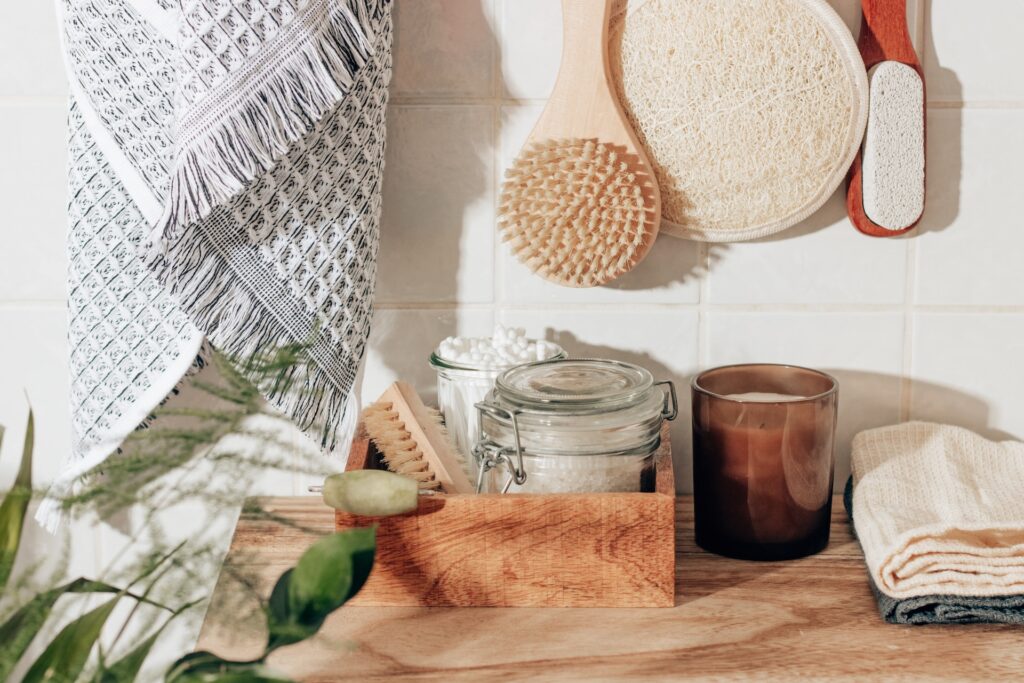Introduction: Welcome to the world of loofas, where nature provides us with a versatile and sustainable exfoliating tool. The word “loofa” may sound exotic, but this natural beauty has been used for centuries across various cultures. In this comprehensive guide, we will explore the many aspects of the loofah, from its origins to its uses in skincare and beyond. You’ll discover how to incorporate this natural wonder into your daily routine, unlocking its benefits for your skin, health, and the environment.
Loofah: A Natural Marvel
Loofah, also known as luffa or lufa, is a tropical and subtropical vine plant belonging to the gourd family. It produces elongated fruits that, when mature, contain a network of fibers within. These fibers, when processed, make for excellent exfoliating materials.
The Loofa Plant’s Origin and Growth
The loofah plant has a long history, with origins in Asia and Africa. It thrives in warm climates and can grow as an annual plant. These vines can reach impressive lengths, making them a sustainable resource for exfoliation.
The Anatomy of a Loofa Fruit
The mature loofah fruit is cylindrical and elongated, typically between 6 to 18 inches in length. When the fruit is dried, it reveals a stiff, fibrous network inside. These fibers, after proper processing, become the loofa sponges you’re familiar with.
Types of Loofas
Not all loofas are created equal. There are two primary types available:
1. Egyptian Loofah
Egyptian loofas are known for their finer fibers, making them ideal for gentle exfoliation. They are especially favored for facial skincare routines.
2. Chinese Loofah
Chinese loofas, on the other hand, have coarser fibers, which makes them perfect for more robust exfoliation. They’re popular for body exfoliation and scrubbing.
Loofa in Skincare
Loofa as an Exfoliant
Loofas are revered for their exfoliating properties. When used in skincare routines, they help remove dead skin cells, unclog pores, and promote healthy, radiant skin.
Loofa Benefits for Skin
- Natural Exfoliation: Loofas provide a chemical-free and environmentally friendly way to exfoliate the skin.
- Enhanced Blood Circulation: The gentle massaging action while scrubbing with a loofa promotes blood flow, contributing to healthier skin.
- Cellulite Reduction: Regular use of loofah can help reduce the appearance of cellulite by stimulating the skin’s elasticity.
How to Use a Loofa in Your Skincare Routine
Incorporating a loofah into your skincare routine is easy:
- Soak the Loofa: Before use, soak your loofah in warm water to soften it.
- Apply Your Cleanser: Apply your favorite cleanser or soap to the loofa.
- Gently Exfoliate: In a circular motion, gently scrub your skin, paying extra attention to rough areas.
- Rinse: Thoroughly rinse your skin and the loofah after use.
- Dry and Store: Allow the loofah to dry fully and store it in a dry place.
Cautions and Considerations
While loofas are incredible skincare tools, they are not suitable for everyone. People with sensitive skin should use caution, as excessive scrubbing can cause irritation. Additionally, it’s essential to keep your loofa clean to prevent the growth of bacteria.
Beyond Skincare: Loofa’s Versatile Uses
Loofas aren’t limited to skincare; they have a wide range of other applications.
Loofa in the Kitchen
Loofah fibers can be used to scrub and clean dishes, pots, and pans. They are eco-friendly and offer an excellent alternative to synthetic scouring pads.
Loofa as a Gardening Tool
Loofas can be a gardener’s best friend. The fibrous texture of a loofah can be used to scrub dirty hands after a day of gardening, providing a natural and gentle exfoliation.
Loofa for Arts and Crafts
The flexibility and durability of loofa fibers make them suitable for various creative projects. They can be incorporated into artwork, such as sculptures and paintings, adding texture and depth to your creations.
Sustainable and Eco-Friendly
The Environmental Benefits of Loofas
Loofas are a sustainable choice for those who are environmentally conscious. Here’s why:
- Biodegradability: When discarded, loofas break down naturally, leaving no long-lasting environmental impact.
- Renewable Resource: Loofa plants can be grown and harvested annually, making them an eco-friendly choice for exfoliation.
- Reduced Plastic Waste: By choosing loofas over synthetic exfoliating products, you help reduce plastic waste.
FAQs
Q: Can I grow my loofah at home?
A: Absolutely! If you have a warm, sunny spot in your garden, you can grow your loofah vine.
Q: Are there any contraindications for using a loofa in my skincare routine?
A: Individuals with sensitive or irritated skin should be cautious when using a loofa, as excessive scrubbing can worsen skin conditions.
Q: How do I clean and maintain my loofah?
A: Rinse your loofah thoroughly after each use, squeeze out excess water, and allow it to dry completely. Replacing it every few months is also a good practice.
Q: Can I use a loofa with my favorite shower gel?
A: Yes, loofas work well with shower gels and soaps. Apply a small amount to your loofa for a luxurious shower experience.
Q: Are there any known allergies associated with loofas?
A: While loofas are generally safe for most people, those with allergies to cucumbers and other gourd-related plants should use caution and test a small area of their skin before regular use.
Q: How long does a loofa typically last?
A: With proper care, a loofa can last between three to six months. Regularly replace it when you notice signs of wear and tear.
Conclusion
In the world of natural exfoliation and sustainability, loofas are true marvels. These versatile plants provide us with excellent tools for skincare and various other applications while also being kind to the environment. Incorporating a loofah into your daily routine can lead to healthier, more radiant skin and a cleaner, more sustainable planet. So, why not embrace this wonderful gift from nature and experience the many benefits of the loofah for yourself?

